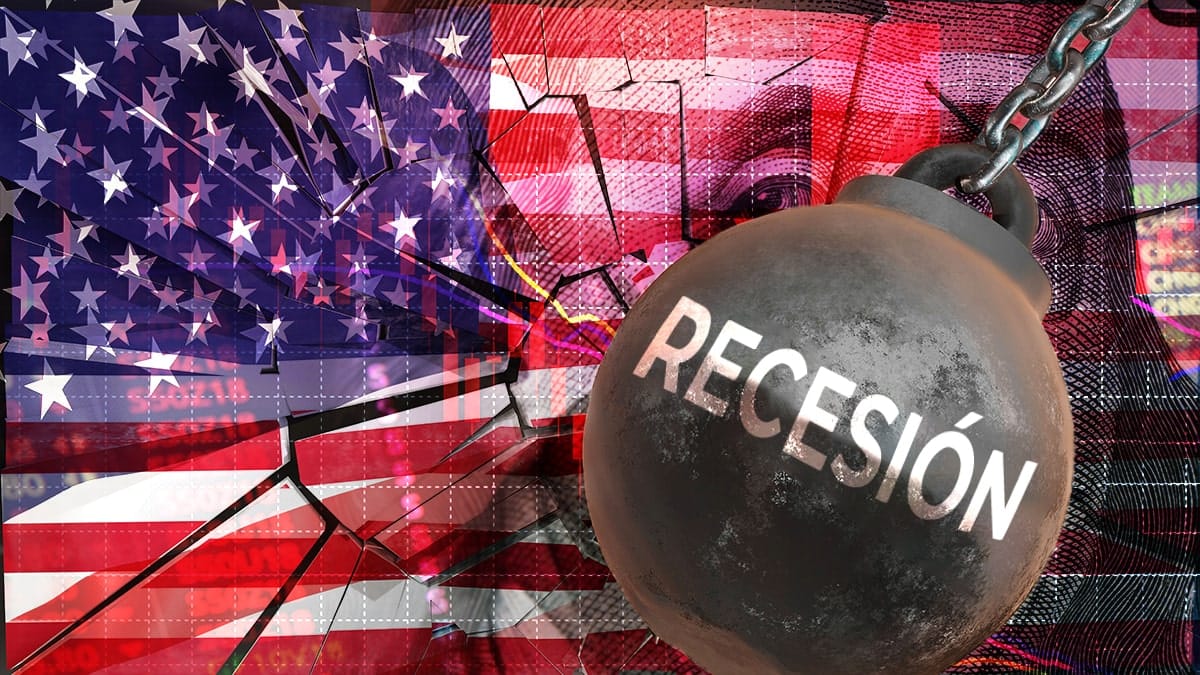Key facts:
The consumer confidence index fell to lower than expected levels.
However, many analysts continue to show positive expectations for the economy.
American consumer confidence has shown clear signs of deterioration in recent months, reflecting growing pessimism about the economy and the country’s financial future.
According to “The Kobeissi Letter,” a financial analysis newsletter founded by specialist Adam Kobeissi, the consumer confidence index fell to 98.7 pointswhich represents the steepest decline in three years for the world’s leading financial power.
This index, which measures citizens’ optimism about the economy, has been close to levels seen during times of high inflation, suggesting that consumers are still feeling the effects of previous price increases.
The analysis also highlights the situation index drop current, which reflects how consumers perceive the economy in real time.
This fell to 124.3 points, its lowest level since 2021. The drop is a clear indication that many Americans are experiencing economic hardship firsthand.
Likewise, the expectations index, which evaluates consumers’ projections about the future, fell by 4.6 points to 81.7, signaling widespread pessimism regarding a short-term economic recoveryas reflected in the following graph.

With all of these factors at play, The Kobeissi Letter warns that consumers feel the country is already in a recession. This pessimistic perception, backed by numbers, highlights an economy that continues to struggle with the after-effects of inflation and other macroeconomic challenges.
Blow to the manufacturing sector
The picture is even bleaker when looking at the manufacturing sector. The Richmond Federal Reserve Manufacturing Employment Index, which covers regions such as Virginia, Maryland, the Carolinas and the District of Columbia, fell to 21 points in September, its lowest level since April 2009.
This index, which measures the health of the manufacturing sector, has been in contraction for most of 2024, and is even below the lows reached during the pandemic in 2020, says the analysis.
Employment expectations for the next six months have also plummeted to -12 points, their lowest level since April 2020, anticipating a bleak future in the labor market, as the graph below shows.

This could translate into lower job creation, massive layoffs and greater difficulties for citizens in finding work. The situation, taken together, suggests that the manufacturing industry is in a serious recession, according to The Kobeissi Letter analysis.
The domino effect of this contraction could affect other sectors of the economy, leading to an increase in unemployment rates and a further reduction in economic activity.
The question that arises in this scenario is whether the country is facing a “soft landing”, a gradual slowdown that avoids a severe recession. Howevercurrent indicators paint a more worrying picture, far from that scenario.
Optimistic views and the impact of rate cuts
Despite the figures that point towards a recession, not all analyzes agree on the severity of the outlook. Coinbase, the largest cryptocurrency exchange in the United States, points out that the risk of recession is low, as reported by CriptoNoticias.
According to the company, although the labor market has shown weakness, this could lead the Federal Reserve (Fed) to continue cutting interest rates faster than expectedespecially if employment data continues to deteriorate.
In fact, on September 18, the Fed made a 0.50% cut in interest rates, a change that broke with the aggressive monetary policy it had maintained since March 2020.
This move has been seen as a sign that the Fed is seeking to avoid a recession, and 3% GDP growth projections, backed by the Atlanta Federal Reserve, reinforce this optimistic view. Additionally, the increase in consumer spending and retail sales continues to be a bright spot.
In this context, investors tend to look for assets considered “risky” such as bitcoin, cryptocurrencies and gold, which offer higher profitability potential compared to other traditional financial instruments.
Bitcoin continues to rise
In the last 7 days, bitcoin price has risen from $63,000 to $65,300driven by macroeconomic uncertainty and interest rate cuts, as seen in the chart TradingView.

Gold, for its part, has reached a historic price of $2,682 per ounce, reflecting the increase in demand for safe haven assets.
In a “soft landing” scenario, improved credit conditions and lower interest rates could facilitate access to capital, benefiting assets like bitcoin.
Investors, seeking higher returns, could take the opportunity to enter this market, further driving the value of cryptocurrencies.
While some sectors such as manufacturing face a possible severe recession, other market players, such as Coinbase, they see opportunities in the midst of uncertainty. The economic future of the United States remains uncertain, but what is clear is that the perception of recession among consumers is increasingly present and, whatever the scenario, bitcoin has reasons to stand out.


